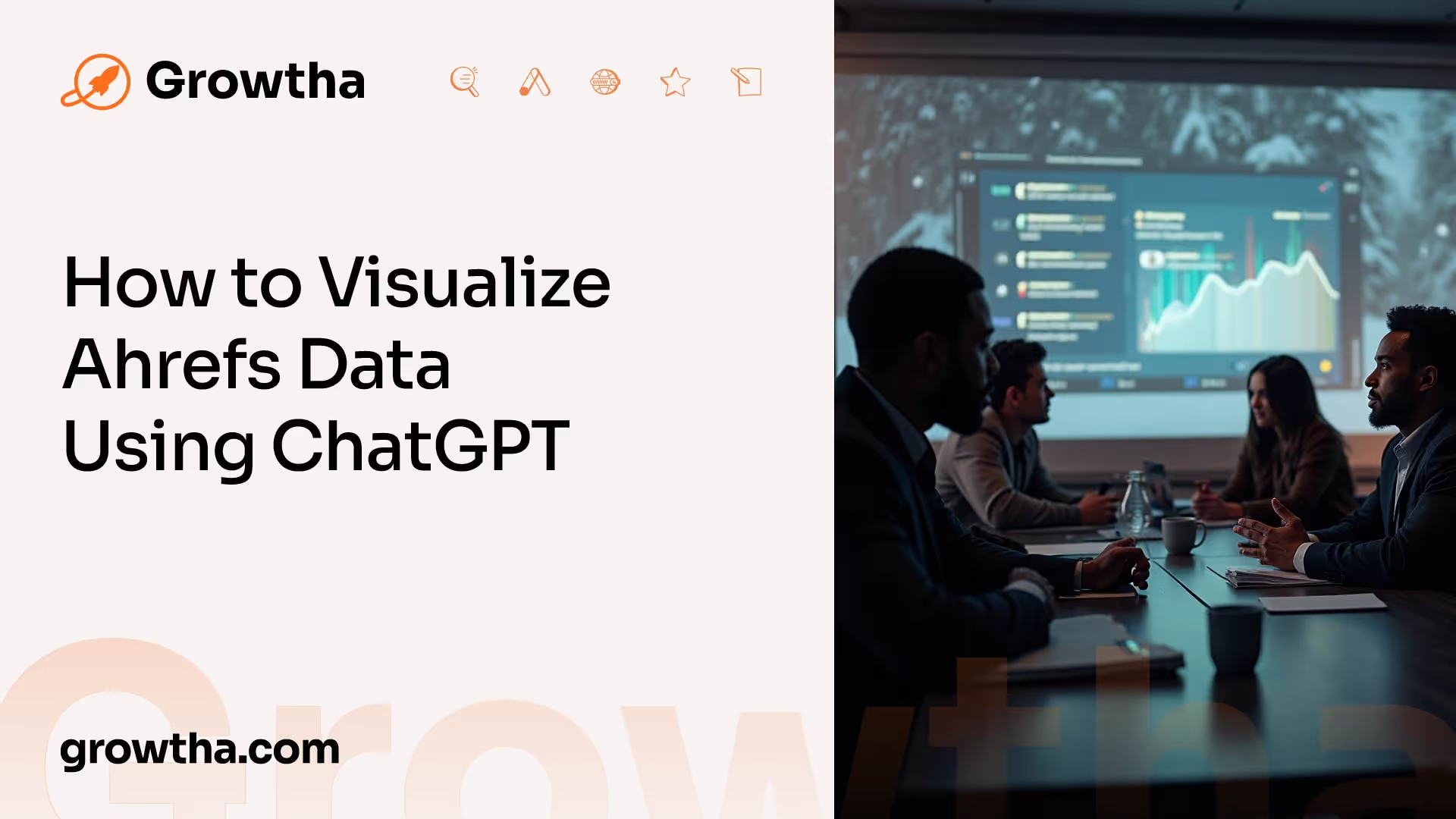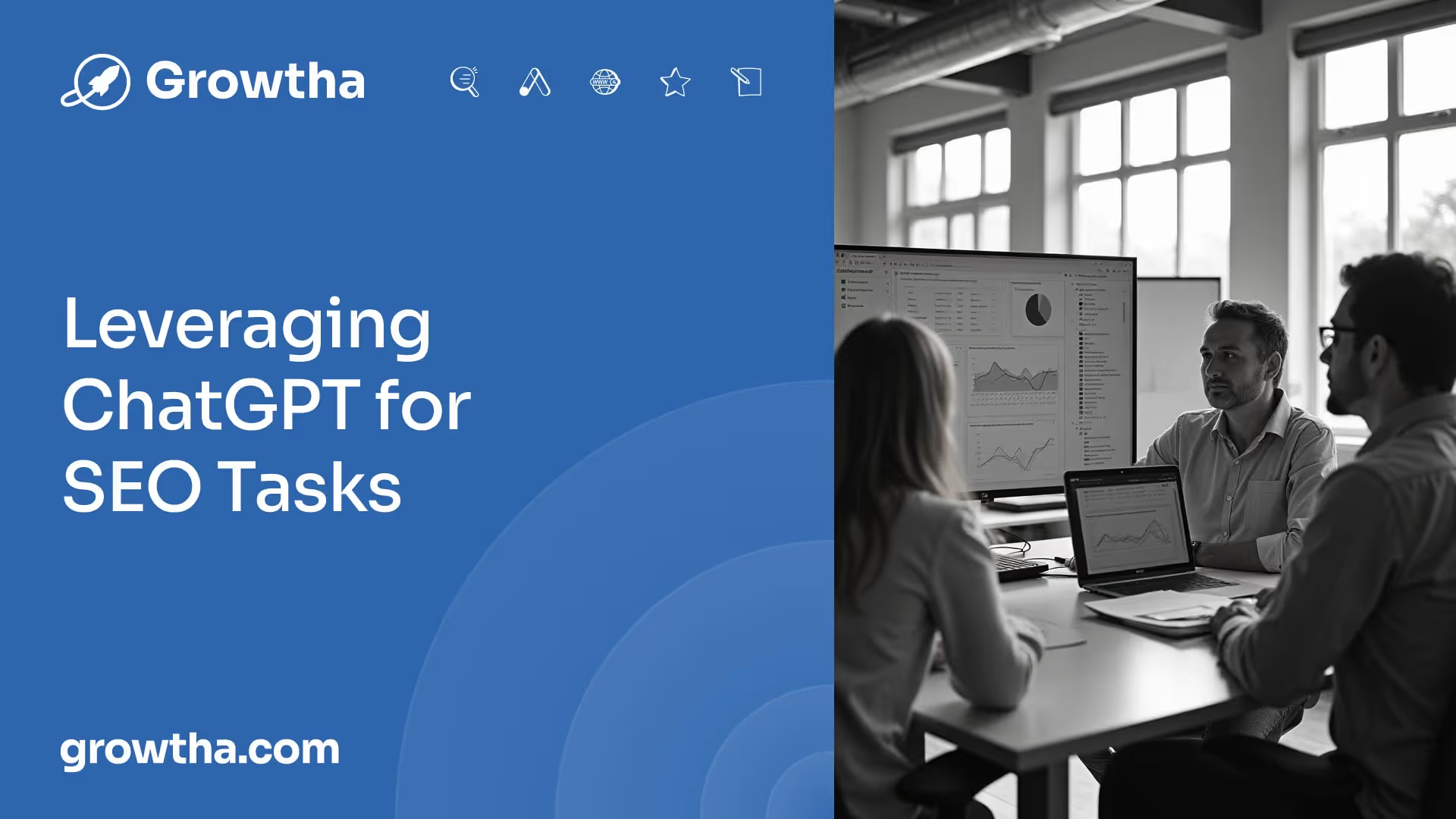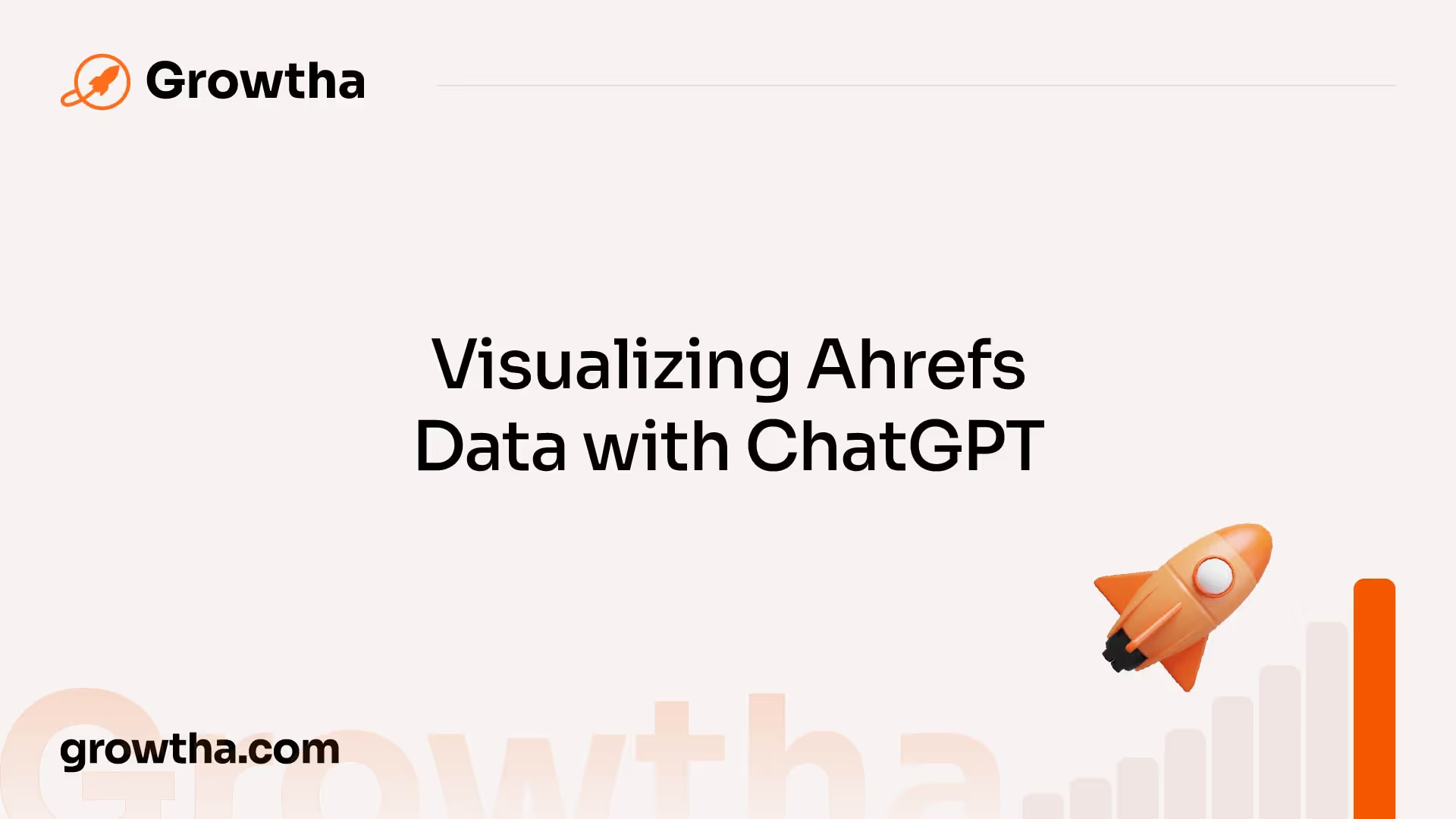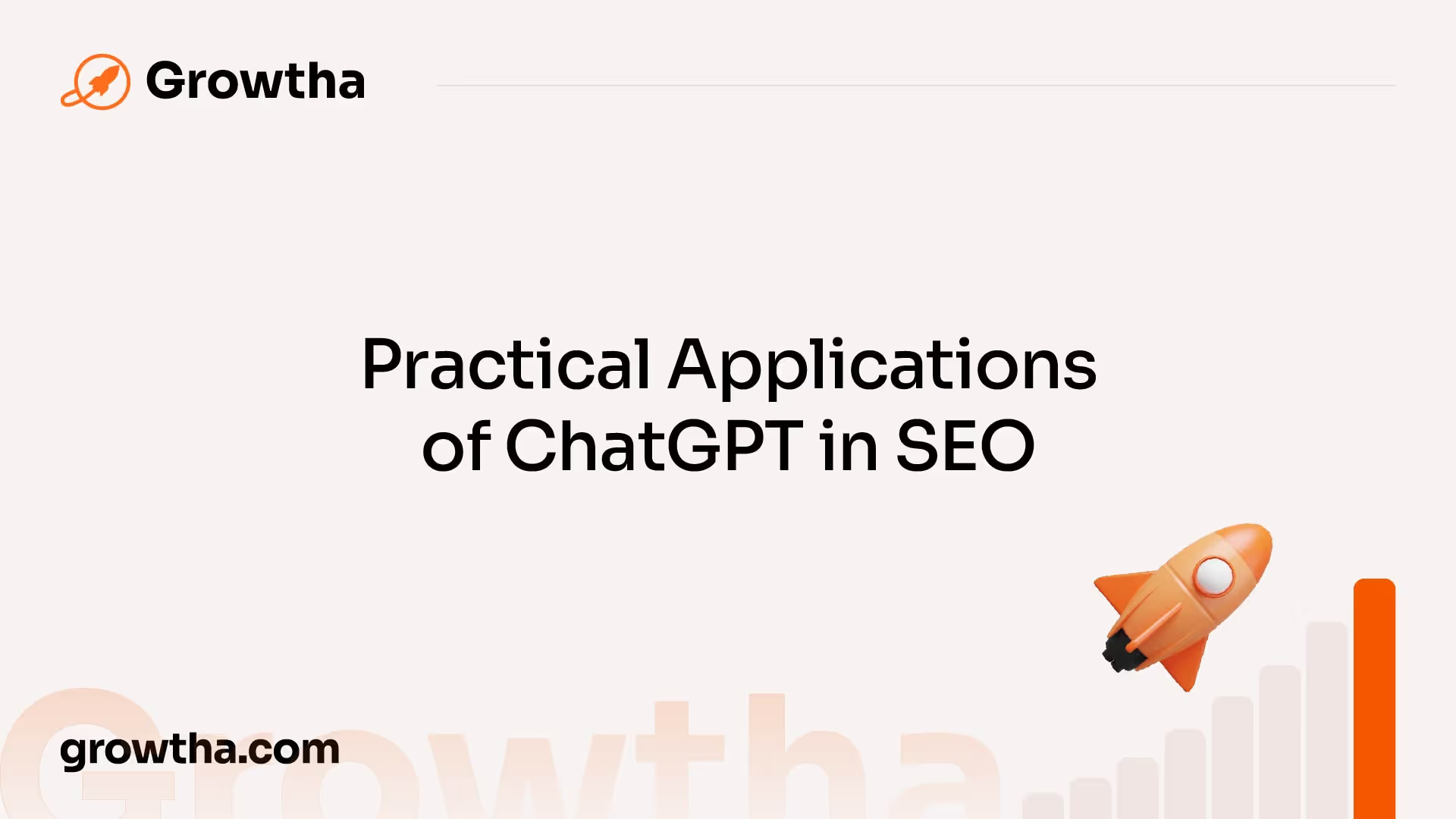How to Visualize Ahrefs Data Using ChatGPT
A marketing funnel represents the journey that potential customers or patients go through, from the initial awareness stage to the final action stage.


How to Visualize Ahrefs Data Using ChatGPT
Understanding Marketing Funnels

To maximize the effectiveness of healthcare SEO marketing efforts, it's essential to understand the concept of marketing funnels. A marketing funnel represents the journey that potential customers or patients go through, from the initial awareness stage to the final action stage. By comprehending the stages of the marketing funnel, healthcare professionals can tailor their strategies to meet the specific needs of their target audience.
AIDA Model Overview
The AIDA model is a widely recognized framework used by marketing teams to create targeted strategies that move potential customers through different stages of the marketing funnel [1]. AIDA stands for Awareness, Interest, Desire, and Action. Let's take a closer look at each stage:
- Awareness: In this initial stage, the goal is to capture the attention of potential customers or patients and make them aware of your healthcare services or products. Healthcare SEO marketing can play a crucial role in increasing brand visibility and attracting relevant website traffic. Strategies like search engine optimization, content marketing, and social media advertising can help create awareness among the target audience.
- Interest: Once potential customers or patients become aware of your healthcare offerings, the next step is to generate interest and engage them further. At this stage, it's important to provide valuable and relevant information that addresses their needs and concerns. Health-related blog posts, informative videos, and downloadable resources can help establish your expertise and build trust with the audience.
- Desire: After capturing the interest of potential customers or patients, the objective is to create a desire for your healthcare services or products. Highlighting the unique selling points and benefits of your offerings can help instill confidence in the audience and differentiate your brand from competitors. Testimonials, case studies, and patient success stories can be powerful tools to showcase the positive outcomes of your healthcare services.
- Action: The final stage of the marketing funnel is to motivate potential customers or patients to take the desired action, such as scheduling an appointment, making a purchase, or subscribing to a newsletter. Call-to-action buttons, clear contact information, and user-friendly website navigation are essential elements to facilitate this step. It's crucial to make the action process as seamless as possible to minimize any friction that may deter conversions.
Stages of the Marketing Funnel
The marketing funnel, also known as the purchase funnel or sales funnel, is based on the AIDA model developed by E. St. Elmo Lewis in 1898 [1]. The stages of the marketing funnel align with the AIDA model and can be summarized as follows:
- Awareness: This is the top of the funnel, where potential customers or patients become aware of your healthcare brand and offerings.
- Interest: In this stage, potential customers or patients show interest in what you have to offer and actively seek more information.
- Desire: At this stage, potential customers or patients develop a desire or preference for your healthcare services or products over competitors.
- Action: The final stage of the funnel, where potential customers or patients take the desired action, such as making a purchase or contacting your healthcare practice.
Understanding the stages of the marketing funnel and how they align with the AIDA model provides a solid foundation for developing effective healthcare SEO marketing strategies. By tailoring your content and messaging to address the needs and motivations of your target audience at each stage, you can guide them through the funnel and ultimately drive conversions.
Leveraging ChatGPT for SEO Tasks

In the realm of SEO, ChatGPT proves to be a valuable tool for various tasks. It can assist with keyword extraction, content creation, and even enhance technical SEO efforts. Let's explore how ChatGPT can be leveraged for these SEO tasks.
Utilizing ChatGPT for Keyword Extraction
ChatGPT can aid in keyword extraction by constructing regex patterns to identify keywords phrased as questions in Google Search Console (GSC). This helps in identifying informational keywords that can be targeted for SEO improvement [2].
ChatGPT for Content Creation
One of the remarkable capabilities of ChatGPT is its ability to generate click-worthy titles for various types of content, such as blog posts, podcasts, or YouTube videos. In fact, it has been found to outperform human-written titles, providing a quick solution for content creation [2].
Additionally, ChatGPT can be utilized to create quick outlines for content based on suggested titles. This makes it an excellent creative sparring partner for SEO content briefs and blog posts, allowing for efficient ideation and organization of ideas [2].
Enhancing Technical SEO with ChatGPT

ChatGPT goes beyond content creation and can also provide technical assistance for SEO tasks. It has the capability to write code, including creating simple apps, automations, and snippets of code like schema markup and hreflang snippets. This proves to be valuable in streamlining technical aspects of SEO implementation [2].
Moreover, ChatGPT can generate meta descriptions, product descriptions, ad copy variations, and more. This capability assists in efficiently creating various types of content, saving time and effort in the content creation process [2].
By leveraging ChatGPT, SEO professionals can enhance their workflow and productivity. Whether it's extracting keywords, generating click-worthy titles, creating content outlines, or providing technical assistance, ChatGPT proves to be a valuable asset in the SEO toolkit.
Visualizing Ahrefs Data with ChatGPT

When it comes to analyzing and understanding the vast amount of data provided by Ahrefs, visualizations can be incredibly powerful. Visualizing Ahrefs data with ChatGPT allows users to bring their data to life and gain valuable insights. Alternatively, users can also create visualizations independently to suit their specific needs.
Introduction to Data Visualization
Data visualization is the process of presenting data in a visual format, such as charts, graphs, or maps, to make it easier to understand and interpret. By transforming complex data into visual representations, patterns, trends, and relationships become more apparent, enabling users to make informed decisions and draw meaningful conclusions.
ChatGPT, powered by GPT-4, provides the capability to generate visualizations based on Ahrefs data. However, if users prefer not to utilize ChatGPT's visualization functionality, they have the option to create visualizations independently using various tools and software.
Creating Visualizations Independently
Users can leverage Ahrefs' data export capabilities to create their visualizations. Here are a few examples of how users can generate insightful visualizations using Ahrefs data:
- Identifying Ranking Gaps: To find the biggest gaps between desktop and mobile rankings, users can download their desktop and mobile rankings from the Overview report in Rank Tracker. By uploading both files to ChatGPT, users can request a scatter plot that compares the desktop and mobile positions for each keyword, highlighting the keywords with the largest ranking gaps.
- Analyzing Branded and Unbranded Traffic: Users can analyze the breakdown of branded and unbranded traffic and volume by downloading keyword rankings from the Organic Keywords report in Site Explorer. By labeling each keyword as branded or unbranded, users can create pie charts showing the sum of "Current organic traffic" and "Volume" for both categories.
- Monitoring Changes in Organic Traffic: By examining the change in volume for branded and unbranded keywords, users can determine if they are gaining or losing clicks for these terms between two dates. By enabling compare mode, downloading keyword rankings from the Organic Keywords report in Site Explorer, and visualizing how organic traffic changed for branded and unbranded keywords based on the sum of data in the "Organic traffic change" column, users can gain valuable insights into traffic fluctuations.
- Analyzing Backlink Lifespan: Users can see how long backlinks were live on average by exporting their link profile from the Backlinks report in Site Explorer. By uploading the file to ChatGPT and requesting a histogram, users can visualize the distribution of backlink lifespans. This analysis can help identify reasons for losing backlinks early.
By using the data exported from Ahrefs and leveraging visualization tools, users can gain deeper insights into their SEO performance and make data-driven decisions to improve their strategies.
Incorporating visualizations into the analysis of Ahrefs data enables users to unlock new perspectives and uncover hidden patterns or opportunities. Whether utilizing ChatGPT or creating visualizations independently, these techniques can enhance the understanding and utilization of Ahrefs data in SEO efforts.
Practical Applications of ChatGPT in SEO

ChatGPT, with its powerful language generation capabilities, offers several practical applications in the field of SEO. It can assist in generating click-worthy titles and provide quick outlines for content creation, making it a valuable tool for SEO professionals.
Generating Click-Worthy Titles
Crafting compelling titles is a crucial aspect of SEO, as it helps attract users and improve click-through rates. ChatGPT proves to be a valuable asset in this regard, as it can generate click-worthy titles for various types of content, such as blog posts, podcasts, or YouTube videos. In fact, according to Ahrefs, ChatGPT has shown the ability to outperform human-written titles in terms of engagement and effectiveness.
By providing a creative sparring partner, ChatGPT can assist SEO professionals in brainstorming and generating unique and attention-grabbing titles. This can save time and effort, especially when faced with a lack of inspiration or when dealing with a large volume of content creation.
Quick Outlines for Content Creation
In addition to generating titles, ChatGPT can also be an invaluable tool for quickly creating content outlines. It can provide suggested outlines based on the given topic or title, serving as a creative companion for SEO content briefs and blog posts. This feature allows SEO professionals to streamline their content creation process and efficiently organize their ideas.
By leveraging the capabilities of ChatGPT, SEO practitioners can benefit from its ability to generate outlines that cover the main points and structure of a piece of content. This not only saves time but also provides a foundation for creating comprehensive and well-structured content that resonates with the target audience.
In conclusion, ChatGPT offers practical applications in the field of SEO. Its ability to generate click-worthy titles and provide quick outlines for content creation can significantly enhance the efficiency and effectiveness of SEO professionals. By leveraging the capabilities of ChatGPT, SEO practitioners can streamline their content creation process and produce high-quality, engaging content that drives traffic and improves search engine rankings.
Advanced AI Integration in SEO
As the field of SEO continues to evolve, advanced AI integration is playing a significant role in enhancing efficiency and productivity. Two notable advancements in AI integration within SEO include the development of custom GPTs for specific use cases and the evolution of AI assistants in the field.
Custom GPTs for Specific Use Cases
On November 6th, 2023, the introduction of custom GPTs revolutionized the field of SEO, allowing users to quickly spin up tools tailored to specific use cases. This development opened up new possibilities for the applications of generative AI in the SEO domain [3].
With custom GPTs, SEO professionals can leverage the power of AI to address specific challenges and tasks within their SEO strategies. These tailored GPTs are designed to assist with keyword research, content creation, technical SEO, and more. By utilizing custom GPTs, SEO practitioners can streamline their workflows and generate more accurate and relevant insights.
Evolution of AI Assistants in SEO
The renaming of Bard to Gemini in February 2024 marked a significant milestone in AI-assisted SEO. With the release of Gemini into Google Workspace as an AI assistant, the integration of AI into SEO strategies reached new heights [3].
Gemini 1.5 Pro, accessed in the Google AI Studio in early December 2023, offered enhanced capabilities for AI-assisted tasks. This version of Gemini provided users with advanced features and functionalities, expanding the potential applications of AI in SEO work [3].
In February 2024, Gemini Advanced was introduced, integrating Gemini into Google Workspace, including applications like Google Docs, Sheets, Meet, and Drive. This integration allows for seamless use of AI capabilities within the Google Workspace environment, enhancing productivity and efficiency in SEO tasks [3].
The evolution of AI assistants in SEO has transformed the way professionals approach their work. With AI assistants like Gemini, SEO practitioners can benefit from AI-powered suggestions, content generation, and data analysis within familiar productivity tools, streamlining their processes and achieving better results.
By embracing advanced AI integration in SEO, professionals can harness the power of custom GPTs and AI assistants to optimize their strategies, improve efficiency, and stay ahead in the ever-changing landscape of search engine optimization.
Expanding AI Capabilities in SEO
As AI continues to advance, its capabilities in the field of SEO are expanding, offering new opportunities for marketers to optimize their strategies. Two notable developments in the integration of AI into SEO include Gemini Advanced Integration and enhancing productivity with AI in Google Workspace.
Gemini Advanced Integration
Gemini Advanced Integration, introduced in February 2024, marked a significant milestone in the utilization of AI for SEO. This integration involved incorporating Gemini, the AI assistant formerly known as Bard, into Google Workspace, which includes popular applications like Google Docs, Sheets, Meet, and Drive.
With this advanced integration, AI capabilities are seamlessly integrated within the Google Workspace environment, providing marketers with enhanced productivity and efficiency in their SEO tasks. By leveraging Gemini's AI capabilities, marketers can streamline their workflows and optimize their SEO efforts directly within the familiar Google Workspace applications.
Enhancing Productivity with AI in Google Workspace
The integration of AI into Google Workspace offers a range of benefits to marketers in the field of SEO. By harnessing the power of AI, marketers can automate certain tasks, gain valuable insights, and optimize their content creation process.
For instance, AI can assist in generating click-worthy titles for blog posts and articles. By analyzing data and utilizing natural language processing algorithms, AI can suggest compelling and engaging titles that are more likely to attract users' attention and drive traffic to the website.
Furthermore, AI can help marketers quickly generate outlines for content creation. By inputting keywords or topics, AI algorithms can provide structured outlines that cover key points, ensuring that the created content is comprehensive and aligned with SEO best practices.
By integrating AI into Google Workspace, marketers can benefit from a seamless and efficient workflow, allowing them to focus more on strategic aspects of SEO rather than mundane tasks.
By embracing these advancements in AI integration, marketers can unlock new possibilities in their SEO strategies. The combination of Gemini Advanced Integration and AI enhancements within Google Workspace empowers marketers to work smarter and more effectively, ultimately leading to improved SEO performance and better outcomes for their websites.
References
[1]: https://ahrefs.com/blog/marketing-funnels/







